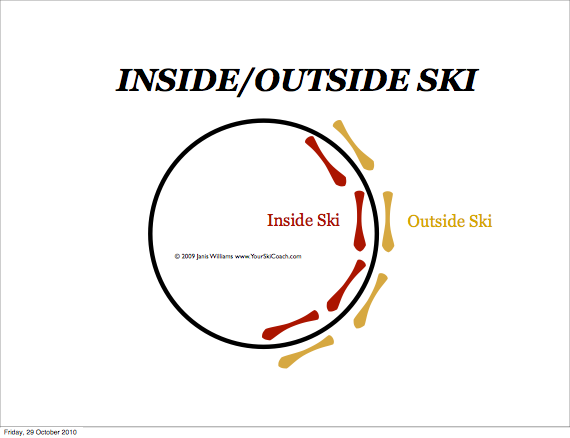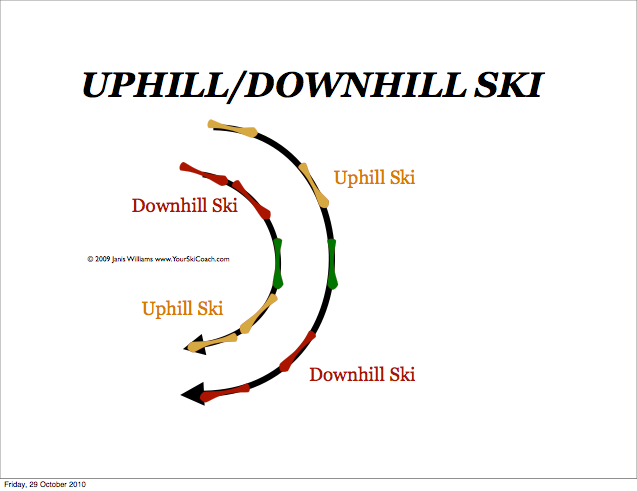Glossary
O
Glossary
O
















Outside / Inside ski
A terminology concept that identifies each ski as you proceed through a turn. If a turn represents a portion of a complete circle, your outside ski is the ski furthest from the center of that circle, and your inside ski is the one closest to the center of that circle.
It’s important to be able to identify your skis according to inside/outside for a couple reasons. When doing training drills, there are often specific tasks that each ski, foot, and leg are required to perform. Knowing which is your inside or outside makes it very easy to identify which is being assigned what task. It also allows for an easy means of communication when discussing technique, or tactical strategy.
This method of communication is in most cases a better alternative to the old “Uphill/Downhill” means of identifying one ski from the other. During the course of a turn, which is actually the uphill ski, and which is the downhill ski, changes through the turn. Telling someone to weight their downhill ski can mean something very different at the start of the turn, than it does at the end of the turn.
Conversely, the inside and outside skis remain the same throughout the entire duration of a turn. They only change when a new turn begins. It’s for that reason using the Inside/Outside terminology makes communication much easier, and more clear. Only in the context of discussing the actions of the feet and skis during a traverse, or within the confines of a standard transition, do the uphill/downhill terms offer a clearer means of communication.

